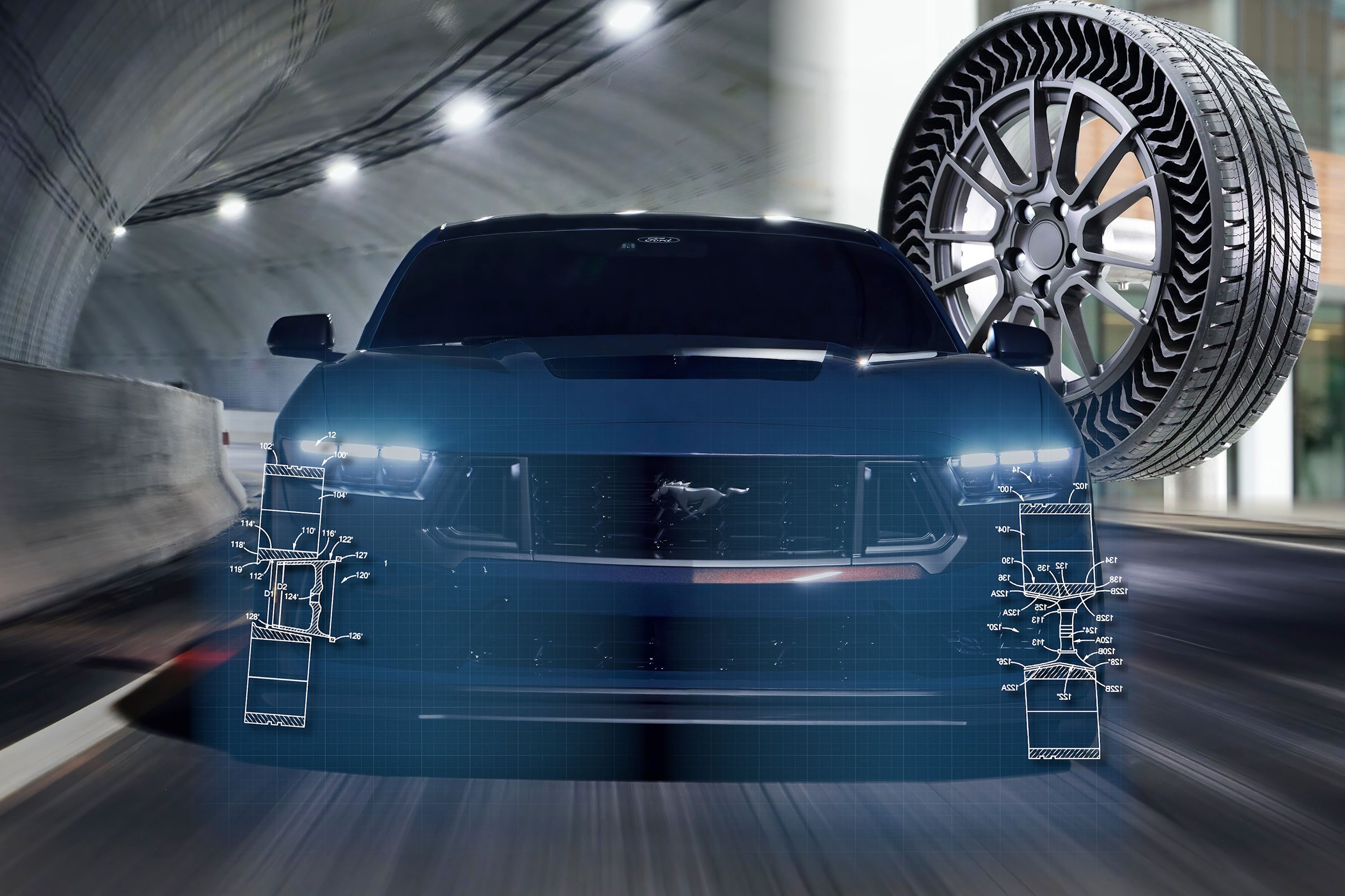Key Takeaways
- Hubless wheel technology: Ford patents new hubless wheel and adaptive suspension system for improved ride quality and control.
- Active suspension assembly: Wheel articulates independently from vehicle body using reactive force through connected electric motor.
- Future potential: Advanced technology could revolutionize transport but may not be practical for mass production yet.
While trawling the endless pages of the United States Patent and Trademark Office website’s many entries, CarBuzz has stumbled upon a unique form of hubless wheel technology that Ford has patented. Yes, Ford has – at least theoretically – developed a wheel that has no physical center and, therefore, no traditional spokes. What for? To make improve ride quality using a unique method of control.
The patent describes “a centerless wheel […] and a natural active suspension assembly which may operably couple the centerless wheel to the vehicle chassis via the wheel rim.” First, the Blue Oval needs a hubless motor, which is not just a facet of many outrageous electric concepts but a relatively common occurrence in the world of scooters and motorcycles. With that, the rest of the idea can come to life.
Reactive Force Is Key
Several embodiments or versions of the patent are possible, but the one that appears to have the most potential viability is described as including a hubless wheel and tire connected to an electric motor (with a separate gearbox used to power the wheel). The electric motor connects the wheel to the car via two armatures, and with this in place, the idea is that the wheel can articulate independently of the vehicle body at any time by applying reactive force through the electric motor.
Essentially, the car tells the motor where it ought to be in relation to the car, and as the hubless wheel cycles through it, this will occasionally hit depressions and bumps, displacing it relative to the motor. This exerts a force on the motor, which, left unchecked, would simply be passed on through the cantilevered armatures and up to the chassis. To prevent this, the motor pushes back, forcing the wheel to rotate around its imaginary center. Thus, the wheel absorbs the impact by converting it to rotational energy.

Related
Ford Develops New Wheels Specifically For Airless Tires
Airless tires won’t bead to the rim the same way aired tires do.
Production Viable Or Just Another Concept Technology?
This technology is clearly far too advanced and complex to be applied to the Ford Mustang or Lincoln Navigator of tomorrow. In fact, Ford’s patent says that the cantilevered arm supporting this motor would likely be supported by traditional springs of some sort, in which case one can’t help but wonder if this is too much effort for too little reward. However, Ford claims the patent is applicable to all sorts of cars, regardless of what they’re powered by. And surely the sublime ride quality of the masterpiece that was the Citroen DS is worth building upon with modern ideas and inventions.
Of course, there are potential drawbacks – a malfunction of some sort would be very messy, cartoonish at best.
Patents like these are not written with an eye to imminent introduction and are simply filed as the basis for brilliant future technology that could someday revolutionize transport. Believe it or not, everything mentioned here could be made real tomorrow. It’s just not practical to produce or package on a mass scale. Not yet, anyway.

